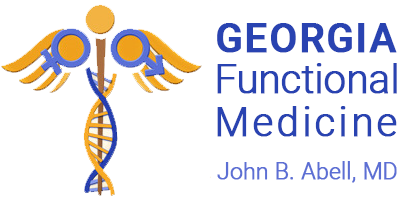So, in general, there are two main reasons that women may consider hormone replacement therapy. The first is for symptom relief and the second is a much broader reason to include protection of cognition, bone health, heart health and its beneficial effect on insulin.
With respect to symptom relief, one can also go a couple of different routes. The first is obviously replacing the hormones that are low or missing. One of the keys here is that in order to do this, we need to actually measure the different hormones.
Progesterone is a wonderful hormone. Most of the symptoms starting in perimenopause are due to the imbalance between estrogen and progesterone. Progesterone begins to decline in the mid to late 30s, estrogen may do so as well, but the decline in progesterone is much more rapid than estrogen. It is because of this imbalance that women start to develop Symptoms of Estrogen Dominance which include but are not limited to:
- Decreased Sexual Interest
- Depression with Anxiety or Agitation
- Water Retention
- Headaches
- Poor Sleep
- Panic Attacks
- Swollen Breasts
- Heavy or Irregular Menstrual Periods
- Increased Risk of Breast Cancer as well as
- Autoimmune Disease
Symptoms of hypothyroidism may develop because of increased binding of thyroid hormone and therefore less available free thyroid hormone. Finally fibrocystic breasts, irritability, mood swings, uterine fibroids and bloating are other symptoms of estrogen dominance. We also need to remember that in our current environment, we are all exposed to excess estrogen-like substances called xenoestrogens. Sources of Xenoestrogens include pesticides, plastics, cosmetics, synthetic hormones given to animals. We will go into this more in detail later.
As a traditionally trained medicine practitioner, I never appreciated that a significant imbalance in hormones in women certainly begins in their 40s. Then I did a Hormone Fellowship. I was previously a speaker for a pharmaceutical company for antidepressants; I certainly prescribed a lot of them in my career before I branched out into Functional Medicine.
However, understanding this one simple principal significantly decreased my need to use antidepressants during this phase of a woman’s life. Simply replacing the naturally declining progesterone helps with many of the symptoms. Natural progesterone has also been shown to be protective against breast cancer. And there is a difference between using natural progesterone and synthetic progestins. This has been studied and published in journals such as Menopause, Obstetrics Gynecology Journal, Journal Women’s Health Gender Based Medicine. And so, I feel, as do many others, that progesterone is a much under-appreciated hormone and is a wonderful addition to help women through this sometimes arduous period of their lives.
Horrible hot flashes that come at the time of menopause are really what we deal with on a regular basis and have a huge impact on some women’s lives. At the time of menopause, there can be huge swings in the estrogen levels. These swings, especially when the estrogen is bottoming out, are responsible for many of the symptoms during this time frame.
Abnormal levels of Cortisol play a large role here as well. Sources of Cortisol abnormalities include the traditional stress that we think about in our lives, and also blood sugar issues, sleep issues, inflammation issues and others. Addressing the cortisol is a key factor if one is to address these hot flashes adequately. It is not just as simple as lathering up with some estrogen.
And so, with a little bit of that background information, there are several avenues that can be taken with respect to symptom relief. Checking hormone levels, including progesterone, is important. In traditional medicine, progesterone measurement is often not done. Once hormones have been checked, then one can consider balancing these hormones, as well as addressing cortisol to help symptom relief. Another viable avenue for those who do not want to take hormone replacement therapy or are afraid of that option, is is to consider botanical agents that have hormone like effects; these are termed phytoestrogens or phytohormones. Some of these are chaste berry, Dong fu, Pueraria mirifica (which by the way deserves a whole article in and of itself) or black cohosh. This is a short list; I agree with other alternative medicine professionals that these are more beneficial if taken in combination as opposed to relying on one agent by itself.
The next question becomes: how long should one want to consider taking hormone replacement therapy? The prevailing recommendations are that hormones be taken somewhere between 5 and 10 years, and then stopped because of their risk of breast cancer. This is a subject of debate and I will devote more time to it later. The beneficial effect on bones as well as other end organs like the brain and the heart is lost once hormones are stopped. When would you want to lose the beneficial effect on your heart, your bones and your brain?
John B. Abell M.D.
